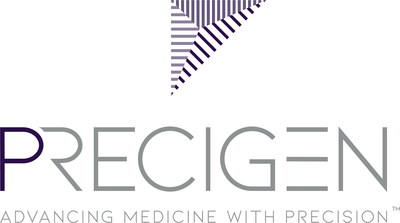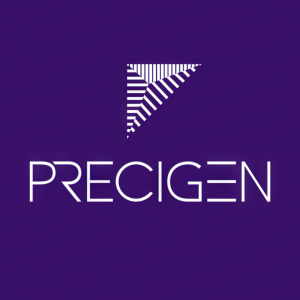Precigen Announces Further Advancement of UltraCAR-T® Platform with First Patient Dosed in Phase 1/1b Dose Escalation/Dose Expansion Study of PRGN-3007 in Advanced ROR1+ Hematological and Solid Tumors
Precigen, Inc. (NASDAQ: PGEN) announced the first patient dosing in the Phase 1/1b study of PRGN-3007, an investigational UltraCAR-T therapy targeting advanced ROR1-positive hematological and solid tumors. This innovative therapy integrates PD-1 checkpoint inhibition and aims to simplify and reduce costs associated with current treatments by eliminating the need for systemic checkpoint inhibitors. The clinical trial will enroll patients with chronic lymphocytic leukemia, mantle cell lymphoma, acute lymphoblastic leukemia, and diffuse large B-cell lymphoma. With over 100,000 patients diagnosed in the U.S., E.U., and Japan in 2023, this development marks a significant milestone for Precigen's advanced cancer therapies.
- First patient dosed in the Phase 1/1b clinical trial of PRGN-3007, advancing the UltraCAR-T platform.
- PRGN-3007 combines intrinsic PD-1 inhibition, potentially lowering costs and systemic toxicity.
- Targets a substantial patient population in the U.S., E.U., and Japan, estimated at over 100,000.
- None.
Insights
Analyzing...
– Milestone represents the first patient dosed with the next generation UltraCAR-T, incorporating PD-1 checkpoint inhibition in addition to three effector genes –
– Proprietary technology for checkpoint blockade intrinsic to UltraCAR-T cells avoids the need for combination with a systemic checkpoint inhibitor, potentially limiting cost and systemic toxicity –
PRGN-3007 UltraCAR-T is a first-in-class investigational multigenic, autologous CAR-T cell therapy utilizing
The Phase 1/1b clinical trial is an open-label study designed to evaluate the safety and efficacy of PRGN-3007 in patients with advanced ROR1+ hematological (Arm 1) and solid (Arm 2) tumors. The study is enrolling in two parts: an initial 3+3 dose escalation in each arm followed by a dose expansion at the maximum tolerated dose (MTD). Arm 1 and Arm 2 are enrolling in parallel. The investigator-initiated study is being conducted in collaboration with the
"We are excited to work with
"Dosing the first patient with PRGN-3007, the next generation of UltraCAR-T incorporating PD-1 inhibition, is a significant milestone for the UltraCAR-T platform," said Helen Sabzevari, PhD, President and CEO of Precigen. "The PRGN-3007 study targets a broad range of hematological and solid tumor indications and this milestone helps us move closer to our vision for UltraCAR-T, which aims to deliver a library of personalized autologous UltraCAR-T therapies using overnight manufacturing at the patient's medical center."
About Receptor Tyrosine Kinase-like Orphan Receptor 1 (ROR1)
ROR1 is a type I orphan-receptor that is expressed during embryogenesis and by certain hematological and solid tumors but is undetectable on normal adult tissues.1-3 ROR1 plays an important role in oncogenesis by activating cell survival signaling events, particularly the non-canonical WNT signaling pathway.4 Aberrant expression of ROR1 is detected in multiple hematological malignancies including CLL5, MCL6, ALL7, and DLBCL.8 Elevated ROR1 expression is detected in various solid tumors, including breast adenocarcinoma encompassing TNBC, pancreatic cancer, ovarian cancer, Ewing's sarcoma and lung adenocarcinoma.9-14 Many human breast adenocarcinomas express high levels of ROR1, which is not expressed by normal breast tissue.15
UltraCAR-T®
UltraCAR-T is a multigenic autologous CAR-T platform that utilizes
UltraPorator®
The UltraPorator system is an exclusive device and proprietary software solution for the scale-up of rapid and cost-effective manufacturing of UltraCAR-T therapies and potentially represents a major advancement over current electroporation devices by significantly reducing the processing time and contamination risk. The UltraPorator device is a high-throughput, semi-closed electroporation system for modifying T cells using
Trademarks
Cautionary Statement Regarding Forward-Looking Statements
Some of the statements made in this press release are forward-looking statements. These forward-looking statements are based upon the Company's current expectations and projections about future events and generally relate to plans, objectives, and expectations for the development of the Company's business, including the timing and progress of preclinical studies, clinical trials, discovery programs and related milestones, the promise of the Company's portfolio of therapies, and in particular its CAR-T and AdenoVerse therapies. Although management believes that the plans and objectives reflected in or suggested by these forward-looking statements are reasonable, all forward-looking statements involve risks and uncertainties, including the possibility that the timeline for the Company's clinical trials might be impacted by the COVID-19 pandemic, and actual future results may be materially different from the plans, objectives and expectations expressed in this press release. The Company has no obligation to provide any updates to these forward-looking statements even if its expectations change. All forward-looking statements are expressly qualified in their entirety by this cautionary statement. For further information on potential risks and uncertainties, and other important factors, any of which could cause the Company's actual results to differ from those contained in the forward-looking statements, see the section entitled "Risk Factors" in the Company's most recent Annual Report on Form 10-K and subsequent reports filed with the
References
a
1 Balakrishnan, A., et al., Analysis of ROR1 Protein Expression in Human Cancer and Normal Tissues.
2 Green, J.L., et al., ROR receptor tyrosine kinases: orphans no more. Trends in Cell Biology, 2008. 18(11): p. 536-544.
3 Rebagay, G., et al., ROR1 and ROR2 in Human Malignancies: Potentials for Targeted Therapy. Front Oncol, 2012. 2(34).
4 Zhao Y, et al., Tyrosine Kinase ROR1 as a Target for Anti-Cancer Therapies. Front. Oncol, 2021.
5 Baskar, S., et al., Unique Cell Surface Expression of Receptor Tyrosine Kinase ROR1 in Human B-Cell Chronic Lymphocytic Leukemia.
6 Hudecek, M., et al., The B-cell tumor–associated antigen ROR1 can be targeted with T cells modified to express a ROR1-specific chimeric antigen receptor. Blood, 2010. 116(22): p. 4532-4541.
7 Enayati H, et al., Expression of ROR1 Gene in Patients with Acute Lymphoblastic Leukemia. IJBC 2019; 11(2): 57-62.
8 Ghaderi, A., et al., ROR1 Is Expressed in Diffuse Large B-Cell Lymphoma (DLBCL) and a Small Molecule Inhibitor of ROR1 (KAN0441571C) Induced Apoptosis of Lymphoma Cells. Biomedicines, 2020. 8(6).
9 Zhang, S., et al., The onco-embryonic antigen ROR1 is expressed by a variety of human cancers. Am J Pathol, 2012. 181(6): p. 1903-10.
10 Zhang, S., et al., ROR1 is expressed in human breast cancer and associated with enhanced tumor-cell growth. PLoS One, 2012.7(3): p. e31127.
11 Potratz, J., et al., Receptor tyrosine kinase gene expression profiles of Ewing sarcomas reveal ROR1 as a potential therapeutic target in metastatic disease. Mol Oncol, 2016. 10(5): p. 677-92.
12 Zheng, Y.Z., et al., ROR1 is a novel prognostic biomarker in patients with lung adenocarcinoma. Sci Rep, 2016. 6: p. 36447.
13 Choi, M.Y., et al., Pre-clinical Specificity and Safety of UC-961, a First-In-Class Monoclonal Antibody Targeting ROR1. Clin Lymphoma Myeloma Leuk, 2015. 15 Suppl: p. S167-9.
14 Balakrishnan, A., et al., Analysis of ROR1 Protein Expression in Human Cancer and Normal Tissues.
15 Zhang S. et al., ROR1 is expressed in human breast cancer and associated with enhanced tumor-cell growth. PLoS One, 2012, 7:e31127.
Investor Contact:
Vice President, Investor Relations
Tel: +1 (301) 556-9850
investors@precigen.com
Media Contacts:
press@precigen.com
glenn.silver@finnpartners.com
![]() View original content to download multimedia:https://www.prnewswire.com/news-releases/precigen-announces-further-advancement-of-ultracar-t-platform-with-first-patient-dosed-in-phase-11b-dose-escalationdose-expansion-study-of-prgn-3007-in-advanced-ror1-hematological-and-solid-tumors-301784205.html
View original content to download multimedia:https://www.prnewswire.com/news-releases/precigen-announces-further-advancement-of-ultracar-t-platform-with-first-patient-dosed-in-phase-11b-dose-escalationdose-expansion-study-of-prgn-3007-in-advanced-ror1-hematological-and-solid-tumors-301784205.html
SOURCE








